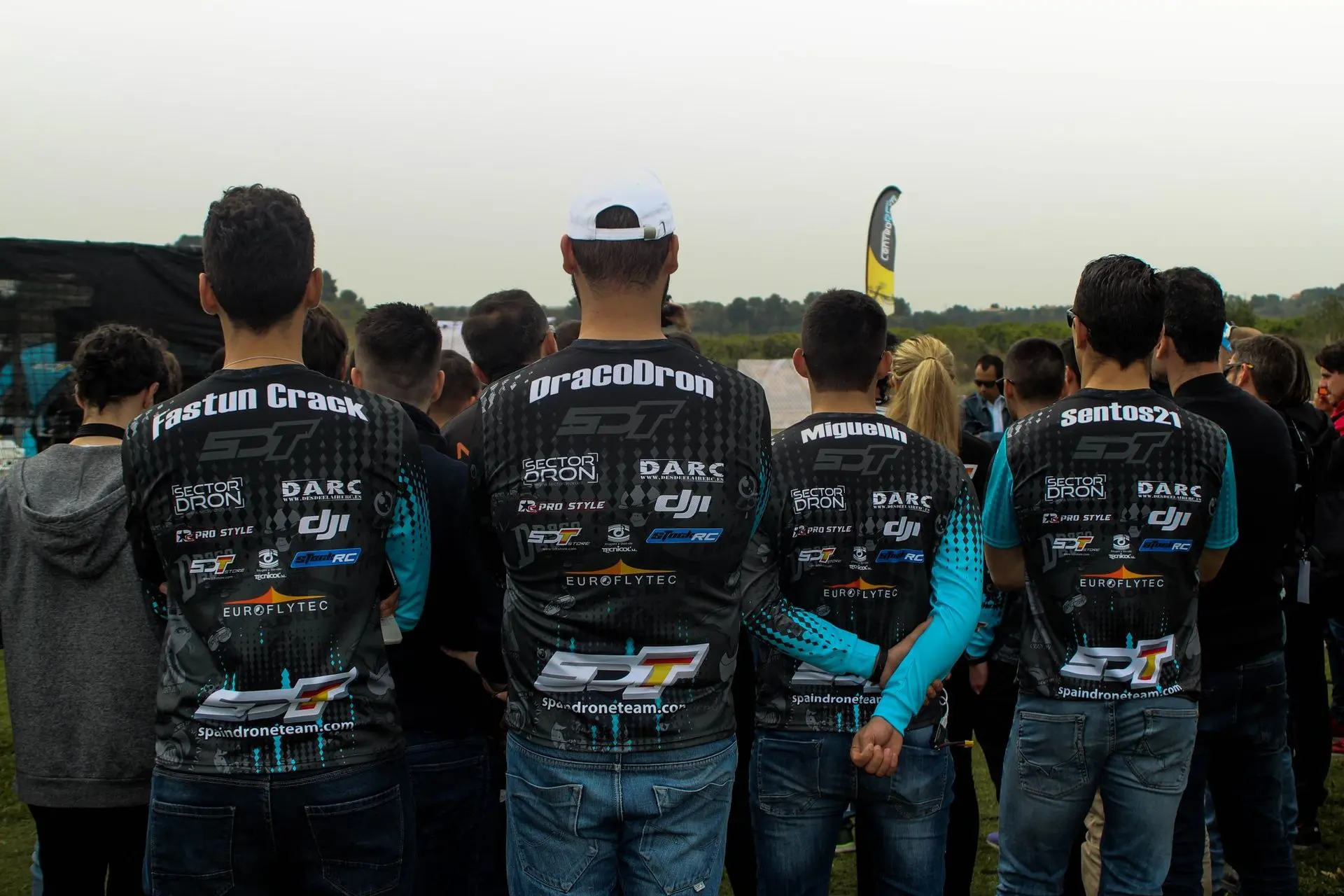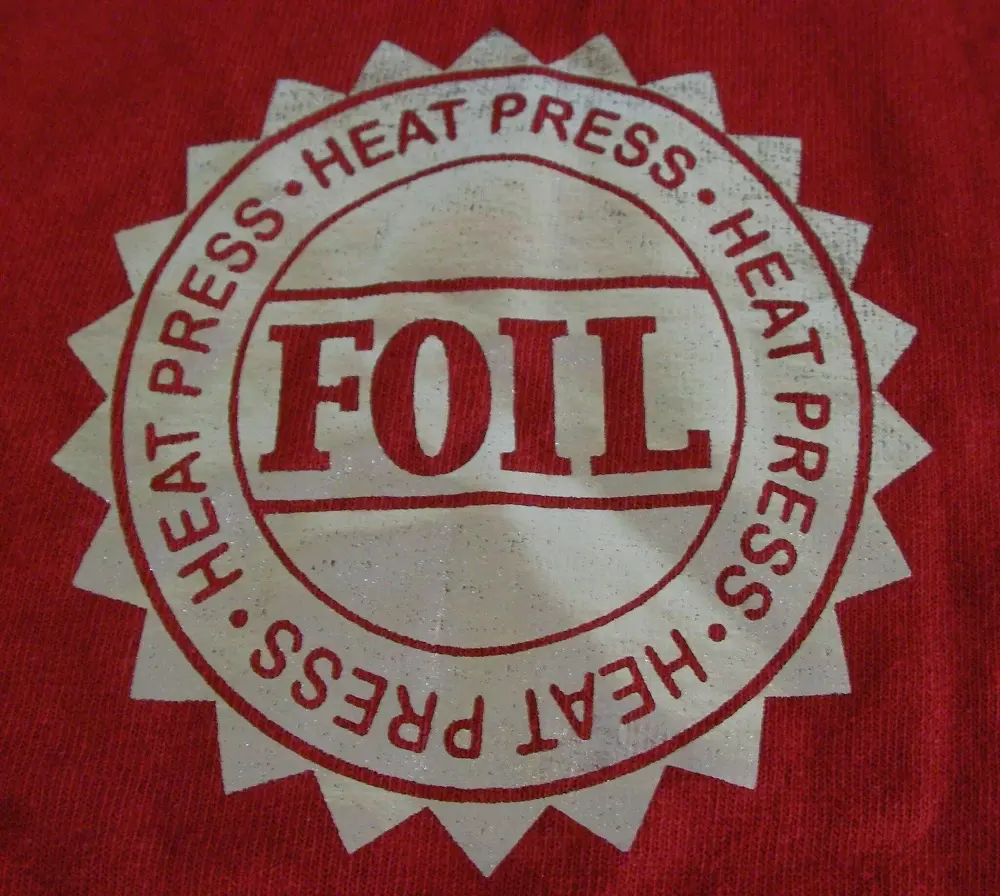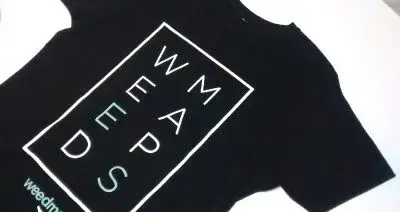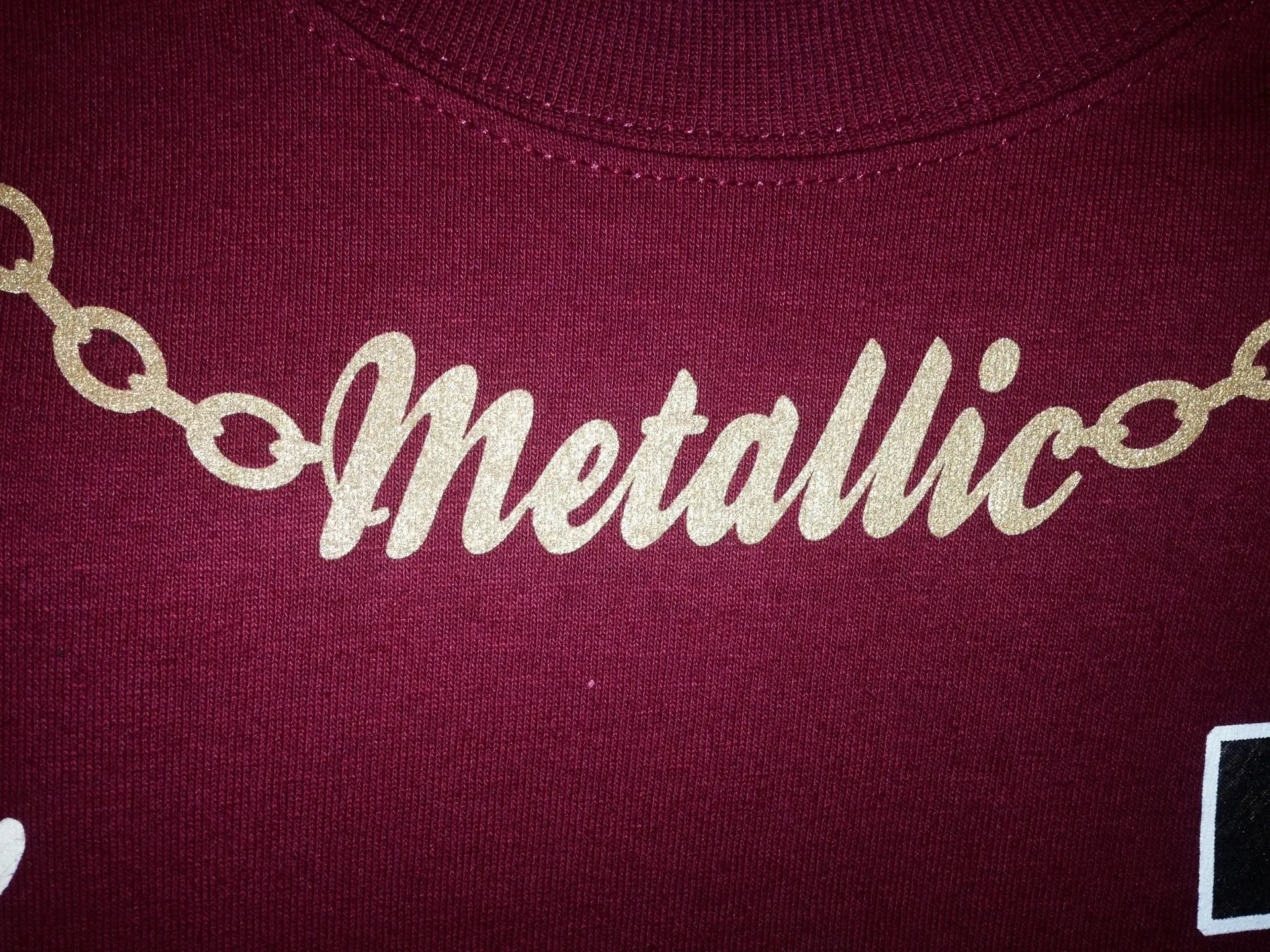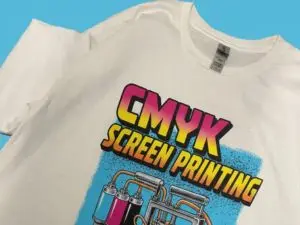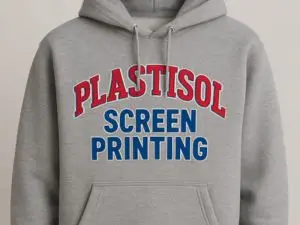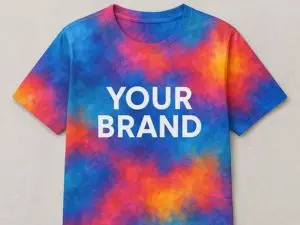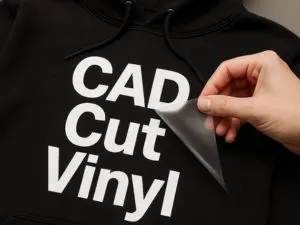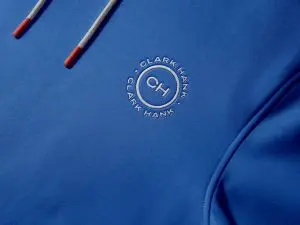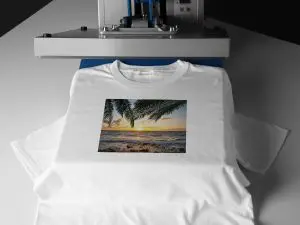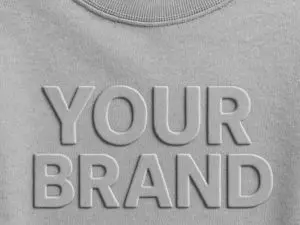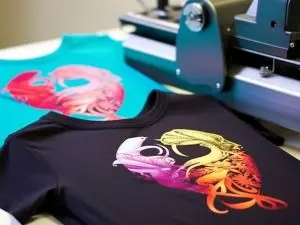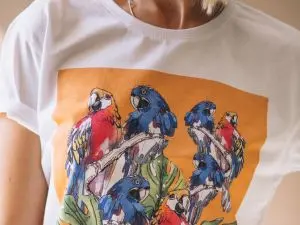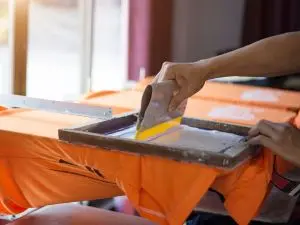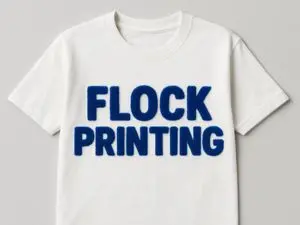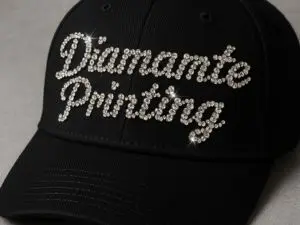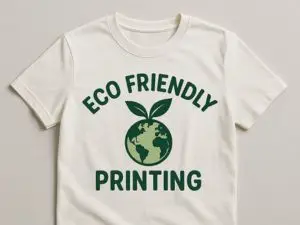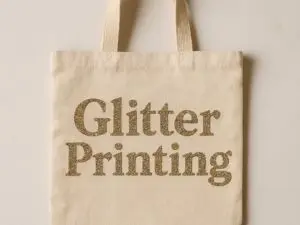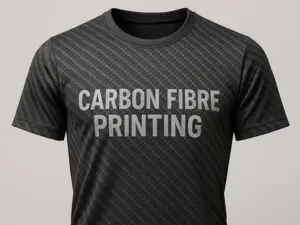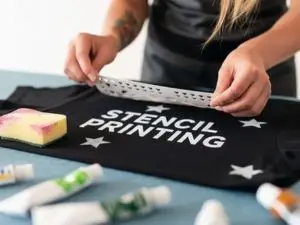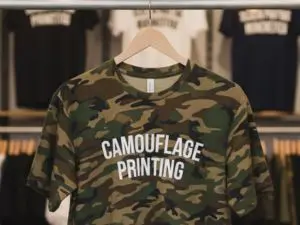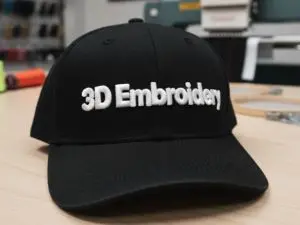What is Screen Printed Transfer?
Screen print transfers, also known as custom screen print transfers or digital screen print transfers, are created using a very similar process to traditional screen printing whereby the design is broken down into spot colours. Each colour is then printed onto a plastic film, which is used to transfer the design by exposing the mesh screen under UV light.
Once all of the screens are prepared for each of the different colours, ink is mixed and then added to the screens. The ink is pushed through the screen using a squeegee, and the final transfers are produced by printing all of the colours onto a special paper or plastic. The last layer is an adhesive layer, which is used to make the screen printed transfer stick to the product.
Once the screen printing transfers are prepared, they can then be applied using a heat press screen print transfer to t-shirts, hoodies, caps, bags, gloves or any other product that might prove too difficult to apply a direct silk screen print to.
This process gives you greater flexibility in placement and product compatibility, enabling vibrant, high-quality results across a wide range of garments and accessories, including puff screen printed transfers for textured, raised effects.
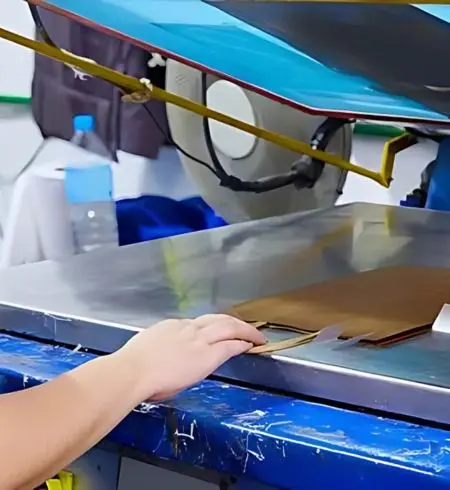
Why Choose Screen Printed Transfer?
If you're printing a high volume of garments, traditional transfer methods like cad-cut vinyl or colour cut-out transfers can quickly become time-consuming and inefficient. In these situations, screen printed transfers are the ideal solution. They offer exceptional speed, consistency, and cost-efficiency for bulk orders, making them perfect for large-scale production runs without compromising on quality.
Given that the set-up process is the same as screen-printing, for lower quantity orders, the cost can be relatively high, but it offers excellent economies of scale: the more you order, the better the price.
Another factor to take into consideration is the colour matching process. Other transfer techniques use a CMYK printing process, however, the colours for screen printed transfers are Pantone matched, so exact Pantone colours can be achieved, which is essential if you are trying to follow brand guidelines and need to produce an accurate Pantone colour.
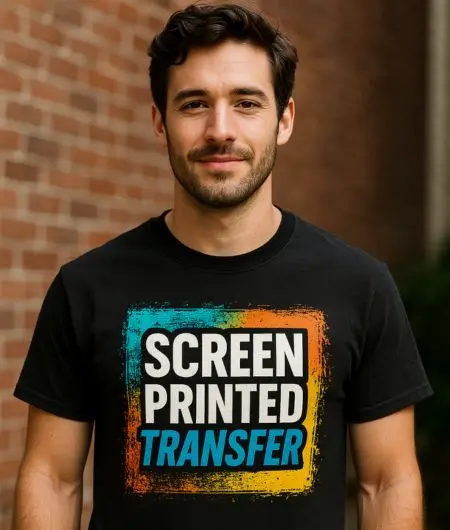
The Difference between Screen Printing and Heat Transfer
The key difference between screen printing and heat transfer lies in how the design is applied. Traditional screen printing pushes ink directly onto the garment through a mesh screen, creating durable prints suited to large runs. Heat transfers, however, use a printed design that is applied to the fabric using heat and pressure.
Screen print transfers blend both methods, designs are screen printed first, then heat pressed onto garments. This provides the flexibility of heat application with the durability and vibrancy of screen printing. Compared to other transfer methods, such as digital heat transfers, screen printed transfers maintain a higher-end finish. Understanding the difference between heat transfer and screen printing is essential when choosing the right method for quality, scalability, and finish.
Screen Printed Transfers vs DTF Printing
When comparing screen printed transfers vs DTF (Direct to Film) printing, it’s important to consider finish, durability, and application. Both are applied using heat, but screen print transfers use screen-printed inks for a classic, bold look and superior durability, ideal for larger runs and consistent Pantone colour matching. DTF printing uses full-colour digital prints applied via a film and excels in capturing intricate, photo-quality designs, even on small batches.
In terms of feel and longevity, screen printed transfers often outperform, delivering a softer, longer-lasting result. On the other hand, DTF is ideal for short-run custom jobs with detailed artwork and no colour limitations. When choosing between DTF vs screen print transfers, consider whether your priority is texture, durability, and brand colour accuracy or digital detail and flexibility.
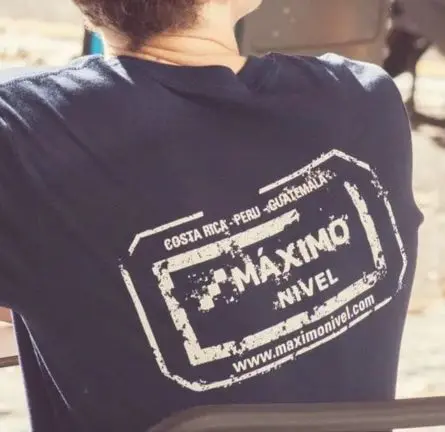
Advantages of Direct to Garment Printing DTG
1. Exceptional Print Quality
DTG produces highest-quality amazing prints within a few hours of receiving the order. It delivers full-colour designs with fine detail, smooth gradients, and photographic clarity. It’s perfect for complex artwork, rich visuals and it can be used on both light and dark coloured garments
2. Soft Feel on Fabric
Because the ink soaks into the fibres, the result is a smooth, breathable print with no heavy texture—ideal for lightweight or fashion-forward garments. It can print full-colour images onto a wide range of clothing.
3. Minimal Setup Required
No setup fees or minimum order quantity. No screens, plates, or separations needed. Designs are printed directly from a digital file, allowing for quicker start times and easier changes between prints.
4. Eco-Friendly Inks
Direct To Garment Tshirt Printing and Clothing Printing is Eco Friendly and produces Fashion Ready Highest Quality Print Finishes on all our products and clothing items. Typically uses water-based, non-toxic inks that are safer for the environment and for the wearer, making it a responsible choice for sustainability-conscious brands.
5. Flexibility in Design
There are no colour limitations, which means you can print vibrant artwork with multiple shades, subtle effects, and intricate details without extra cost. Perfect for fashion, promotional, stag and hen do T Shirts
Disadvantages of Direct to Garment Printing DTG
1. Best Suited for Cotton
DTG works best on 100% cotton or high-cotton blends. Performance fabrics or synthetics often require pretreatment or are not compatible at all.
2. Slower for Large Volumes
For very large print runs, DTG can be slower and less cost-effective compared to screen printing, which is faster at scale.
3. Higher Cost Per Garment in Bulk
Without the economies of scale that screen printing offers, the per-unit cost of DTG can be higher when printing large quantities.
4. Limited on Dark Garments Without Pretreatment
Dark fabrics often require a pretreatment process to ensure white ink and colour vibrancy, which adds time and complexity.
5. Requires Specialised Equipment and Maintenance
DTG printers are sophisticated machines that require regular maintenance and controlled environments to run efficiently.
Additional Screen Printing Techniques
Our additional screen printing techniques offer creative ways to elevate your designs beyond the standard print. From eye-catching metallics and glow-in-the-dark finishes to soft-touch puff inks and eco-conscious water-based options, these methods add depth, texture, and visual impact to your garments. Perfect for brands looking to stand out, these speciality techniques allow you to push the boundaries of screen printing while maintaining professional quality and durability.
More Printing Techniques
Explore our full range of professional printing methods designed to suit any garment, artwork complexity, or production scale. Whether you're looking for vibrant full-colour finishes, eco-friendly inks, or textured and speciality effects, we offer advanced solutions tailored to your needs. Each technique provides unique benefits in appearance, durability, and application, ensuring your finished product makes a lasting impression.
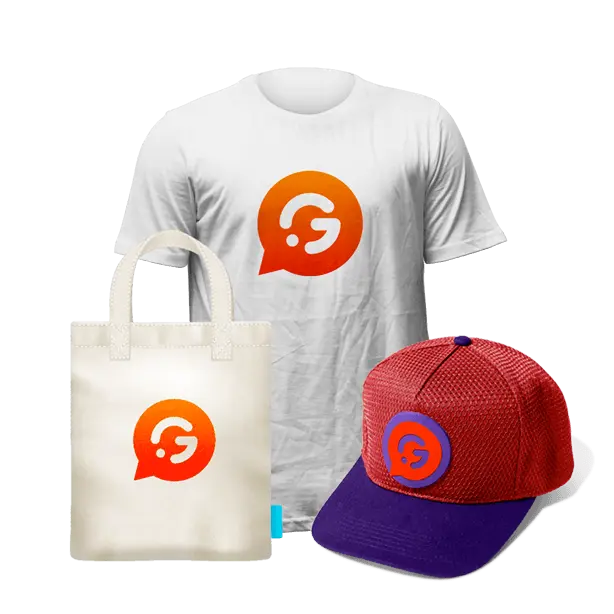
Get 10% off your first order
Get a quick quote for your next custom project and we'll
give you 10% off or free delivery when you spend £500 or more

